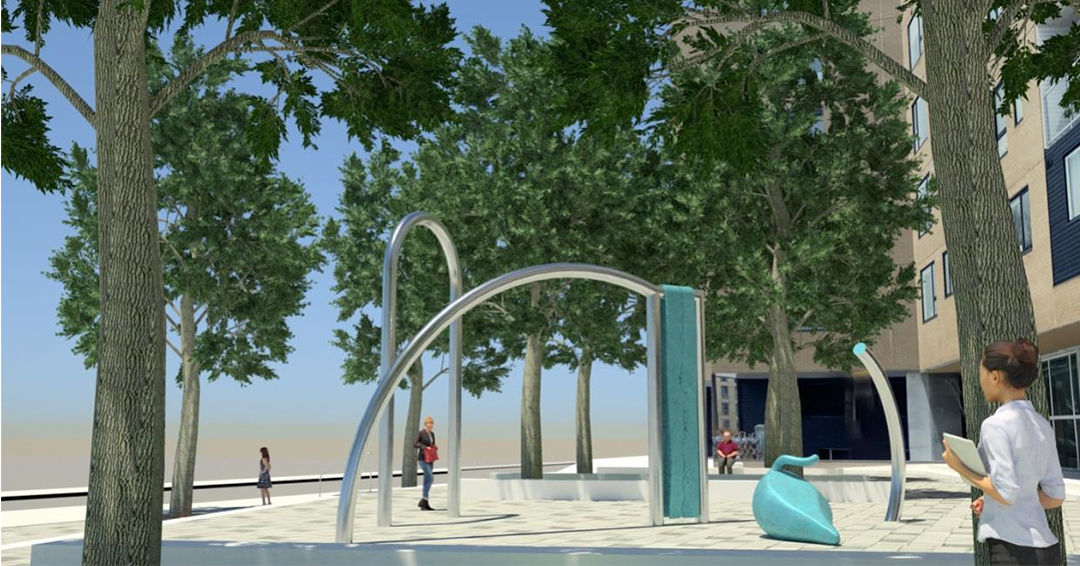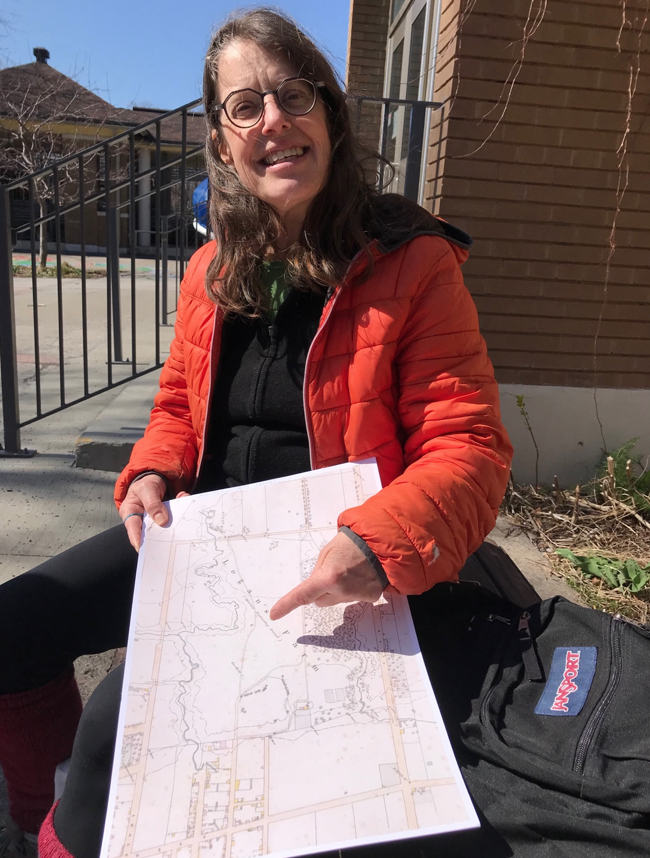
Two public art projects launching in Montreal this summer take inspiration from the botanical collection of Dr. Andrew Holmes, one of the founders of McGill’s Faculty of Medicine
Two-hundred years ago, a young man frequented swamps, stream banks and thickets, collecting wild plants across what would become the urban core of the city of Montreal. He had recently returned home from Edinburgh, where he had gone to be receive medical training, learning there also techniques of drying and preserving plant specimens, botany and medicine then being sister-subjects.
It was likely on his visits to friends and patients across the city that he did his collecting, often re-visiting the same spots on different dates, creating a catalog of flowers and fruits as they appeared through the seasons. Dr. Andrew Holmes would go on to help found Canada’s first medical school, the Montreal Medical Institution, which shortly after became the Faculty of Medicine in the freshly established McGill University.
Holmes donated his plants to the McGill University Herbarium on its founding, and these have been cherished and preserved ever since. Although the earth of Montreal now holds up the buildings and industry of a metropolis, thanks to Holmes’ botanical record, the spirit of these last days of wilderness can still be pictured. Two public art projects launching in Montreal this summer take inspiration from this collection; sharing a goal to resonate this glimpse of the past into the present and through to the future.
Hidden images appear as if by magic

In search of the Papineau Woods, in the words of its creator, Loren Williams, “creates a conversation between an early woods and a present day urban park.” Ephemeral and playful, Williams’ vision was to instal on the walkways of Parc La Fontaine a series of paintings of the plants Holmes collected there. Made with waterproofing paint, the images emerge from the concrete with the addition of water. The changes introduced by the seasons, plant growth, weather, the movement of people, and of the paintings themselves into and out of view as they are wetted or dry, will create this alchemical chatter of varying compositions.
She hopes some of her images will also appear by surprise to thirsty visitors to the park’s drinking fountains, or to soggy soccer players who have matches and practices rain or shine. Contextual information, and indications that there is a hidden image will also be installed in the park; plant images will be added through the summer, coinciding with the dates that Holmes collected them. Maps, which “form a portal to the history of a place” will be part of the information provided, showing past waterways of the park and the Papineau Woods and the Montreal Holmes once knew.
Williams’ work also bridges the location’s ancestral floral diversity to its current vocation as green playground in an urban ocean. Many of the painted plants are no ghosts, and can also be found growing in the park, or are on the “to plant” list, thanks to the city’s horticultural team, who have been working with Williams to select species which could once again thrive in the varied growing conditions available in the park’s ponds and gardens.
New public square in Griffintown
Holmes’ youthful plant collecting jaunts about the city also provide a trellis for Marie-Michelle Deschamp’s winning design of a new public square. Various metal sculptures will make up the installation and will be installed by the City of Montreal this July in a redeveloped area in Griffintown near the canal.
Striving to honour the past in a vision of the future, her final design reflects the importance of water, shipping and industry to the area and invites the visitor to contemplate its changing vegetation. Metal pipes will reference ductwork, the movement of water and echo the prominent architectural element of arches in the old industrial buildings. A large, cast milkweed fruit will float boat-like across the middle space of the square, Deschamps adding that it is also symbolic for being a “plant of the future”, as it can be used as insulation, is indigenous to Quebec, and can be sustainably grown here. A ribbon element will flow both like water and like a scrollwork of the sites botanical history, including images that Deschamps laser-cut into the metal of many other plant species that Holmes collected.
Deschamps explained the evolution of her creation to me as emerging from a common experience of many people during the pandemic, which “made us look differently at nature.” Having gone many times to the area around Rimouski and Parc du Bic, where the primary features of the landscape are natural, Deschamps became familiar with the plants that grew there. Then, mostly restricted to the city in 2020, walking each day from her home to her studio through Villeray and across highway 40, she began to appreciate the plants of this very industrial space. The ability of nature to come through the layers of the city, and for many of the species she knew from the shores of the fleuve to find a home in a small crack in the concrete, was a marvel and an inspiration which informed her design for the square.
Looking at and acknowledging the past, well also giving a view to the future, where indigenous plants can have a bigger role, both Deschamps and Williams share a vision in their work of closing a circle and creating a harmony between the ages that embraces both change and constancy.
